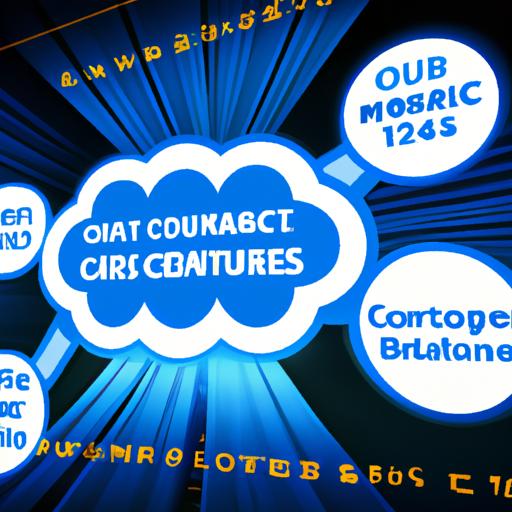Introduction to Master Data Management Tools

In the ever-evolving world of business, data is the new currency. Organizations rely on vast amounts of information to make critical decisions and gain a competitive edge. However, with the exponential growth of data, managing and harnessing its potential has become a daunting task. This is where Master Data Management (MDM) tools come to the rescue.
What is Master Data Management?
Master Data Management refers to the process of organizing, centralizing, and governing the critical data that defines a business. It involves creating a single, reliable source of truth for essential data entities such as customers, products, and locations. MDM tools enable businesses to gain control over their data, ensuring consistency, accuracy, and quality.
The Importance of MDM in Modern Business Operations
In today’s data-driven world, accurate and reliable information is the backbone of successful decision-making. MDM plays a crucial role in ensuring data integrity and consistency across various systems and departments within an organization. By providing a unified view of data, MDM tools empower businesses to streamline operations, enhance customer experience, and drive innovation.
Overview of MDM Tools and their Role in Managing Data
MDM tools come equipped with a wide range of features designed to simplify data management. These tools provide functionalities such as data integration, data cleansing, and data governance. They enable businesses to consolidate, standardize, and cleanse data, eliminating duplicates and inconsistencies. MDM tools act as a centralized hub, allowing organizations to manage and maintain a single version of truth for their critical data.
As we delve deeper into the world of Master Data Management Tools, we’ll explore their key features, the benefits they offer, and the various types available in the market. So, join me on this journey to unlock the power of data with MDM tools. Let’s harness the potential of information and propel our businesses towards success.
Stay tuned for the next section, where we’ll uncover the remarkable features and benefits of Master Data Management Tools.
Key Features and Benefits of Master Data Management Tools

Explanation of Essential Features Offered by MDM Tools
Master Data Management (MDM) tools are equipped with a wide array of features that streamline data management processes and enhance data governance. Let’s explore some of the essential features offered by these tools:
1. Data Integration: MDM tools enable seamless integration of data from various sources, systems, and departments. They facilitate the consolidation of data, breaking down data silos, and creating a unified view of information.
2. Data Cleansing and Standardization: MDM tools provide functionalities to cleanse and standardize data, ensuring its accuracy and consistency. Through automated processes, these tools identify and eliminate duplicates, correct errors, and standardize data formats.
3. Data Governance: MDM tools offer robust data governance capabilities, allowing organizations to establish and enforce data policies, rules, and workflows. They provide a framework for data stewardship, ensuring data quality and compliance with regulations.
Benefits of Using MDM Tools for Data Management and Governance
Implementing MDM tools in your organization can yield numerous benefits that significantly impact data management and governance. Here are some key advantages:
1. Improved Data Accuracy: MDM tools eliminate data discrepancies and inconsistencies, providing a single version of truth. This accuracy enhances decision-making, reduces errors, and boosts overall operational efficiency.
2. Enhanced Data Consistency: By centralizing and standardizing data, MDM tools ensure consistency across systems and departments. This consistency fosters collaboration, improves data sharing, and facilitates seamless integration of information.
3. Increased Data Quality: MDM tools offer mechanisms to cleanse and validate data, resulting in improved data quality. Clean and reliable data enhances customer satisfaction, enables targeted marketing, and supports accurate reporting and analytics.
4. Streamlined Business Processes: With MDM tools, organizations can streamline business processes by automating data integration, cleansing, and governance. This automation saves time, reduces manual errors, and allows resources to focus on value-added tasks.
In the next section, we will dive into the different types of Master Data Management tools available in the market and explore their unique characteristics. Stay tuned to uncover the perfect MDM tool for your organization!
Types of Master Data Management Tools

Overview of Different Types of MDM Tools
When it comes to Master Data Management (MDM) tools, businesses have a plethora of options to choose from. Each type of MDM tool offers unique features and functionalities to cater to diverse organizational needs. Let’s explore some of the common types of MDM tools available in the market:
-
On-Premise MDM Solutions: On-premise MDM solutions are installed and operated within an organization’s own infrastructure. These tools offer complete control and customization, making them ideal for businesses with strict security and compliance requirements. On-premise MDM solutions are favored by organizations that prefer to have full ownership and management of their data.
-
Cloud-Based MDM Solutions: Cloud-based MDM solutions, as the name suggests, are hosted on the cloud. These tools provide flexibility, scalability, and accessibility from anywhere, making them suitable for businesses with distributed teams or those looking for rapid deployment. Cloud-based MDM solutions offer seamless integration with other cloud-based applications, enabling organizations to leverage the power of the cloud.
Comparison Between On-Premise and Cloud-Based MDM Solutions
Choosing between on-premise and cloud-based MDM solutions depends on various factors. Let’s compare these two types to help you make an informed decision:
On-Premise MDM Solutions:
- Requires upfront infrastructure investment and ongoing maintenance.
- Provides complete control over data security and compliance.
- Offers customizability to meet specific business requirements.
- Requires dedicated IT resources for installation, maintenance, and upgrades.
Cloud-Based MDM Solutions:
- Eliminates the need for infrastructure investment and maintenance.
- Provides scalability to accommodate growing data volumes and user demands.
- Offers easier collaboration and accessibility for remote teams.
- Provides automatic updates and maintenance by the service provider.
Introduction to Open-Source MDM Tools and Their Advantages
Open-source MDM tools have gained popularity due to their flexibility, cost-effectiveness, and collaborative nature. These tools are developed and maintained by a community of contributors, allowing businesses to modify and enhance the software according to their specific needs. Some advantages of open-source MDM tools include:
- Cost-Effectiveness: Open-source MDM tools are often free to use, significantly reducing software licensing costs.
- Customizability: Businesses can customize the open-source MDM tools to align with their unique data management requirements.
- Community Support: Open-source tools benefit from a vibrant community of developers, ensuring regular updates, bug fixes, and support.
In the next section, we’ll delve into the factors you should consider when choosing a Master Data Management tool. Stay tuned!
Factors to Consider When Choosing a Master Data Management Tool
Evaluation Criteria for Selecting an MDM Tool
Choosing the right Master Data Management (MDM) tool is crucial for the success of your business. With a plethora of options available, it’s essential to evaluate the tools based on specific criteria that align with your organization’s needs. Consider factors such as:
-
Functionality: Assess the features and functionalities offered by different MDM tools. Look for capabilities like data integration, data cleansing, data governance, and data quality management. Ensure the tool can handle the specific data domains and entities relevant to your business.
-
Scalability: As your business grows, so does the volume and complexity of your data. It’s essential to choose an MDM tool that can scale alongside your organization. Evaluate the tool’s ability to handle large datasets, accommodate increasing data sources, and support future expansion.
-
Integration Capabilities: Consider the tool’s compatibility with your existing systems and applications. Look for seamless integration capabilities with your Customer Relationship Management (CRM), Enterprise Resource Planning (ERP), and other core systems. Smooth data integration ensures a unified view of your data across the organization.
Data Security Considerations
Data security is a paramount concern when selecting an MDM tool. Ensure the tool prioritizes data protection and adheres to industry-standard security practices. Consider the following aspects:
-
Data Privacy: Evaluate the tool’s data privacy measures to ensure compliance with regulations such as GDPR or CCPA. Look for features like data anonymization, role-based access controls, and encryption to safeguard sensitive information.
-
Access Controls: Ensure the MDM tool provides robust access controls and user management features. This ensures that only authorized personnel can access and modify your critical data.
Cost Analysis and Return on Investment (ROI) of MDM Tools
Implementing an MDM tool is an investment for your organization. Consider the following factors when analyzing the cost and potential ROI of the tool:
-
Licensing and Implementation Costs: Evaluate the upfront costs associated with licensing the MDM tool and any additional implementation or customization expenses. Consider the long-term benefits and potential cost savings the tool can provide.
-
Time-to-Value: Assess how quickly you can achieve tangible business benefits with the MDM tool. A tool that offers quick implementation and a shorter time-to-value can provide a higher RO
Remember, selecting the right MDM tool requires careful analysis of your business requirements, scalability needs, data security considerations, and cost factors. With a well-chosen MDM tool, you can unlock the full potential of your data and drive business growth.
Stay tuned for the next section, where we’ll dive into best practices for implementing and utilizing Master Data Management Tools effectively.
Conclusion: Empowering Businesses with Master Data Management Tools
In today’s data-driven landscape, businesses must effectively manage and leverage their data to stay ahead of the competition. Master Data Management (MDM) tools offer a comprehensive solution for organizations seeking to take control of their data assets.
Throughout this article, we have explored the definition and significance of MDM in modern business operations. We have also delved into the role of MDM tools in managing and governing critical data. Now, let’s recap the key takeaways and discuss the impact of MDM tools on businesses.
By implementing MDM tools, businesses can achieve a unified view of their data, ensuring accuracy, consistency, and quality. These tools facilitate seamless integration and cleansing of data, eliminating duplicates and inconsistencies. With a centralized hub for data management, organizations can streamline operations and enhance decision-making processes.
Best Practices for Implementing and Utilizing Master Data Management Tools
To maximize the value of MDM tools in your organization, it is crucial to follow best practices for their implementation and utilization. Consider the following steps:
-
Step-by-step guide for successful implementation of MDM tools: Begin with a thorough assessment of your data landscape and define clear goals for MDM implementation. Develop a comprehensive roadmap and involve key stakeholders throughout the process.
-
Data governance strategies and data quality management techniques: Establish robust data governance policies and procedures to ensure data integrity and compliance. Implement data quality management techniques, such as data profiling and monitoring, to maintain high-quality data.
-
Tips for maximizing the value of MDM tools in your organization: Continuously evaluate and refine your MDM strategy to align with evolving business needs. Foster a culture of data ownership and accountability within your organization. Regularly train and educate your teams on MDM best practices.
In conclusion, Master Data Management tools offer businesses the means to unlock the full potential of their data. By implementing and utilizing these tools effectively, organizations can gain a competitive edge, drive innovation, and make informed decisions. Embrace MDM tools and empower your business to thrive in the data-driven era.
Thank you for joining me on this journey to uncover the power of Master Data Management tools. Stay tuned to WEEKLY NEWS for more insightful articles and updates on the latest trends in technology and business.



